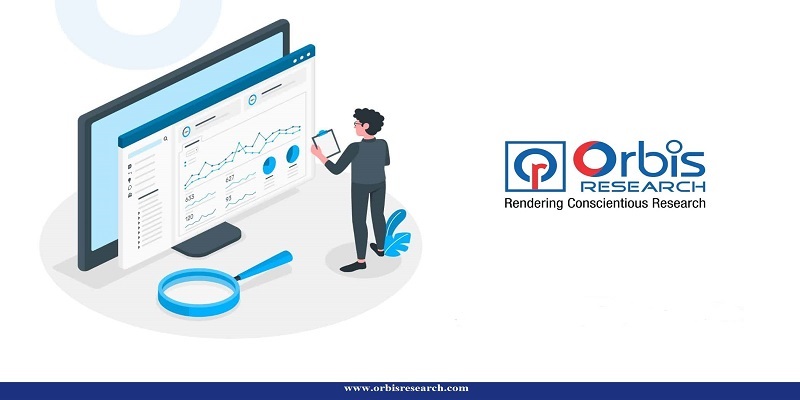
Press Release, Orbis Research The Non-residential Green Building market report provides a comprehensive analysis of the current market scenario, key market indicators, top players, geographic insights, impact of rising geopolitical tensions, growth prospects, and underlying market dynamics. It aims to equip stakeholders with valuable insights to navigate challenges and capitalize on emerging opportunities in the Non-residential Green Building market.
Request a sample report @ https://www.orbisresearch.com/contacts/request-sample/7383415
1.Introduction
o Overview of the Non-residential Green Building Market
o Scope and Objectives of the Report
2. Market Overview The Non-residential Green Building market encompasses a diverse range of industries and sectors, each contributing uniquely to the global economy. This report provides an in-depth analysis of the current landscape within the Non-residential Green Building market, highlighting key trends, challenges, and opportunities shaping its trajectory.
3. Market Indicators Economic Indicators Influencing the Non-residential Green Building Market:
The Non-residential Green Building market is significantly influenced by macroeconomic factors. Economic stability and growth directly impact sectors within the market, influencing investment decisions and market expansion.
Non-residential Green Building market Segmentation by Type:
Net-zero Energy Ready
Net-zero Energy
Net-zero Carbon
Non-residential Green Building market Segmentation by Application:
Commercial Residence
Private House
Direct Purchase the report @ https://www.orbisresearch.com/contact/purchase-single-user/7383415
Technological Advancements and Innovations:
Rapid technological advancements, including AI, IoT, and blockchain, are revolutionizing operations across various segments of the Non-residential Green Building market.
Regulatory Framework and Policy Impacts:
Regulatory policies and compliance requirements play a crucial role. Changes in regulations related to environmental standards, data privacy, and healthcare policies can have profound implications on industry practices and market competitiveness.
4. Top 25 Players Key players include multinational corporations, innovative startups, and established firms known for their market leadership, innovation capabilities, and strategic initiatives.
5. Geographic Analysis Regional Analysis of the Non-residential Green Building Market:
The market exhibits varying dynamics across different regions, influenced by factors such as economic development, cultural preferences, and regulatory environments.
6. Impact of Rising Geopolitical Tensions Geopolitical Factors Influencing the Non-residential Green Building Market:
Recent geopolitical tensions, trade disputes, and tariff escalations have created uncertainties in global markets, impacting supply chains, trade agreements, and investment flows within the Non-residential Green Building market.
Key Players in the Non-residential Green Building market:
HOCHTIEF AG
AECOM
Skanska Group
Clark Construction Group, LLC
Obayashi Corporation
Lendlease Corporation
Swinerton Incorporated
Hensel Phelps
Gilbane Building Company
Clayco, Inc.
7. Market Growth and Pain Points Growth Prospects and Forecast for the Non-residential Green Building Market:
The Non-residential Green Building market is poised for robust growth driven by technological innovation, demographic shifts, and increasing consumer demand for personalized products and services.
Challenges and Constraints Affecting Market Expansion:
Key challenges facing the Non-residential Green Building market include regulatory complexities, resource constraints, cybersecurity threats, and evolving consumer preferences. Companies must address these challenges through adaptive strategies to sustain growth and competitive advantage.
8. Market Dynamics Consumer Behavior and Preferences:
Changing consumer preferences towards sustainability, convenience, and digital experiences are reshaping market dynamics. Companies are leveraging consumer insights and analytics to develop targeted marketing strategies and innovative product offerings that resonate with evolving consumer demands.
Do You Have Any Query Or Specific Requirement? Ask to Our Industry Expert @ https://www.orbisresearch.com/contacts/enquiry-before-buying/7383415
Competitive Landscape and Market Concentration:
The Non-residential Green Building market is characterized by intense competition and varying degrees of market concentration across different sectors. Companies are differentiating themselves through innovation, quality, and customer-centric approaches to gain market share and enhance profitability.
Technological Disruptions and Future Outlook:
Future trends in the Non-residential Green Building market include advancements in AI, automation, renewable energy technologies, and personalized healthcare solutions. Companies that embrace technological disruptions and innovation-driven strategies will be well-positioned to capitalize on emerging market opportunities.
9. Conclusion In conclusion, the Non-residential Green Building market presents significant opportunities for growth and innovation amid evolving market dynamics and challenges. Strategic foresight, agility in response to regulatory changes and geopolitical uncertainties, and continuous investment in technology and consumer insights will be pivotal for companies aiming to thrive in this dynamic market landscape.
About Us
Strategic Recommendations for Stakeholders:
– Investments in digital transformation initiatives to enhance operational efficiency and customer engagement.
– Strengthen regulatory compliance frameworks to mitigate legal risks and ensure market sustainability.
– strategic partnerships and alliances to expand market reach and capitalize on international growth opportunities.
– Embrace innovation and R&D investments to develop competitive advantages in emerging market segments.
Contact Us:
Hector Costello
Senior Manager – Client Engagements
4144N Central Expressway,
Suite 600, Dallas,
Phone: +1 (972)-591-8191,
Email: sales@orbisresearch.com